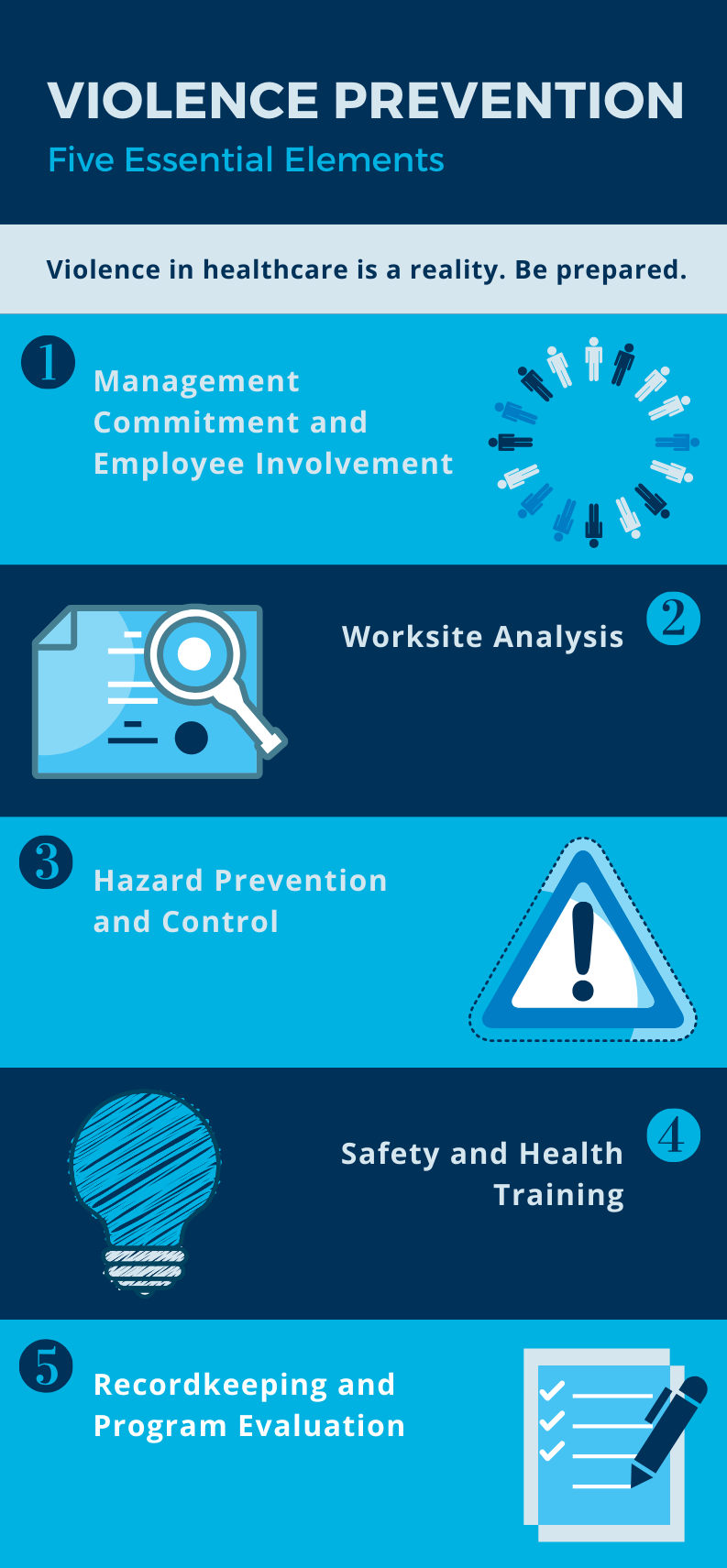Assessing the Impact of Office Culture on the Success of Violence Avoidance Efforts and Employee Well-Being
The crossway of workplace culture, violence prevention initiatives, and staff member health warrants mindful exam, as these components jointly affect organizational success. A culture that prioritizes open communication and emotional safety and security can equip employees to recognize and report possible risks, thereby fostering a setting for both psychological health and wellness and reliable violence avoidance strategies. However, the subtleties of just how these aspects communicate remain diverse and complicated. Comprehending the certain systems at play can expose important insights that might notify future initiatives and drive purposeful modification within companies. What underlying dynamics may be influencing these outcomes?
Comprehending Office Culture
Frequently, workplace society works as the structure for staff member interactions and general organizational actions. It encompasses the shared values, ideas, and practices that form the setting in which employees run. A positive workplace society fosters collaboration, regard, and open interaction, while an unfavorable society may breed stress, wonder about, and hostility. Comprehending workplace culture is essential for organizations intending to implement effective violence prevention strategies.

Organizations should examine their present work environment society to identify areas for enhancement. This assessment can include surveys, emphasis teams, or individually discussions. By recognizing the cultural characteristics at play, organizations can carry out targeted interventions that promote a safer and a lot more respectful job environment, ultimately lowering the danger of physical violence in the office.
Function of Worker Well-Being
A favorable work environment culture not just affects organizational habits however additionally dramatically influences staff member wellness. When employees feel valued and appreciated, their overall work contentment increases, causing boosted mental and emotional wellness. This, subsequently, fosters a feeling of belonging and commitment, which is important for lasting engagement and performance.
Furthermore, an encouraging cultural environment promotes open communication, allowing employees to look for and express worries help without fear of preconception. This openness is critical in dealing with issues connected to anxiety, burnout, and interpersonal conflicts, which can negatively impact both private wellness and organizational harmony.
Furthermore, organizations that prioritize worker wellness often see lowered absenteeism and turn over rates. Healthy and balanced employees are extra durable and much better geared up to handle work environment difficulties, adding to a more secure and effective workforce.
Purchasing employee well-being through initiatives such as health cares, psychological health sources, and versatile functioning arrangements can create a positive feedback loop, enhancing both specific fulfillment and cumulative business success (california workplace violence prevention). Inevitably, focusing on worker health is not merely a moral imperative; it is a tactical strategy that benefits the entire organization
Physical Violence Avoidance Strategies
Implementing effective physical violence avoidance approaches is essential for preserving a secure and healthy and balanced office setting. Organizations has to take on a thorough method that includes plan growth, worker training, and proactive communication. Establishing clear workplace physical violence plans is the primary step, making certain that all employees understand acceptable habits and the consequences of infractions.
Training programs need to be designed to educate staff members concerning identifying warning indicators of potential violence, problem resolution strategies, and emergency situation feedback treatments. Normal drills and simulations can boost readiness, cultivating a culture of understanding and accountability.
Moreover, promoting open interaction networks motivates workers to report problems without fear of retaliation. This can be facilitated with anonymous reporting systems or regular feedback sessions. Additionally, advertising a supportive office society that values respect and inclusivity can considerably alleviate the danger of physical violence.
Organizations should likewise participate in routine assessments of their workplace culture and violence prevention techniques, adjusting them to evolving demands. By focusing on these techniques, firms not just secure their workers however likewise improve general wellness, ultimately contributing to a more productive workplace.
Determining Social Effect
Gauging the effect of workplace society on physical violence prevention initiatives is vital for understanding the effectiveness of present techniques and recognizing locations for improvement - california workplace violence prevention. To achieve this, organizations must use a multifaceted technique that integrates qualitative and quantitative techniques. Surveys and analyses can collect information on staff member understandings of workplace inclusivity, support, and security systems, while occurrence reports supply concrete proof of violence occurrences and their context within the business society
Additionally, focus groups and interviews can expose much deeper understandings right into workers' attitudes, experiences, and ideas bordering violence prevention efforts. Evaluating this qualitative information original site aids companies to identify social strengths and weaknesses that may either help with or prevent efficient prevention approaches. Benchmarking against market requirements allows for relative analysis, helping companies evaluate their performance loved one to peers.

Producing Supportive Atmospheres
Frequently cultivating a supportive atmosphere within the workplace is crucial for efficient violence avoidance. Such environments encourage workers to connect freely about their experiences and concerns, consequently determining prospective concerns before they escalate. A society of support enhances count on amongst team participants, motivating partnership and aggressive analytic.
To develop a helpful atmosphere, organizations have to prioritize training programs that concentrate on dispute resolution, emotional knowledge, and energetic listening. These abilities gear up workers to manage interpersonal partnerships constructively, reducing the possibility of misunderstandings that can cause physical violence - california workplace violence prevention. Furthermore, executing mentorship programs can provide employees with guidance and confidence, adding to their general health
Management plays an important function in forming a supportive office culture. By modeling empathetic behavior and showing a dedication to staff member well-being, leaders set a tone that urges others to do the same. Routine feedback mechanisms, such as confidential studies, can additionally assist gauge employee view and highlight locations for improvement.
Inevitably, a supportive setting not just alleviates the danger of violence but additionally enhances worker spirits, work contentment, and performance, enhancing the organization's dedication to promoting a growing and safe office.
Conclusion
A positive workplace society substantially affects both physical violence avoidance initiatives and employee health. By cultivating open interaction and encouraging the reporting of concerns, companies can improve psychological health and wellness and task complete satisfaction among staff members. An encouraging society enhances the performance of violence prevention index methods by resolving and advertising the prompt acknowledgment of warning signs. Eventually, growing such an atmosphere functions as a vital foundation for successful treatments and adds to the total success of the organization.
The junction of workplace culture, violence avoidance efforts, and worker health warrants mindful exam, as these elements collectively affect business success. A culture that focuses on open interaction and psychological security can empower workers to identify and report potential risks, thereby promoting an environment helpful to both mental wellness and effective physical violence avoidance techniques.A positive workplace society not just affects business actions but likewise substantially influences worker wellness. Studies and evaluations can collect data on staff member understandings of workplace support, inclusivity, and security systems, while incident records provide concrete proof of violence occurrences and their context within the business culture.
A positive office culture considerably affects both physical violence avoidance initiatives and employee health.